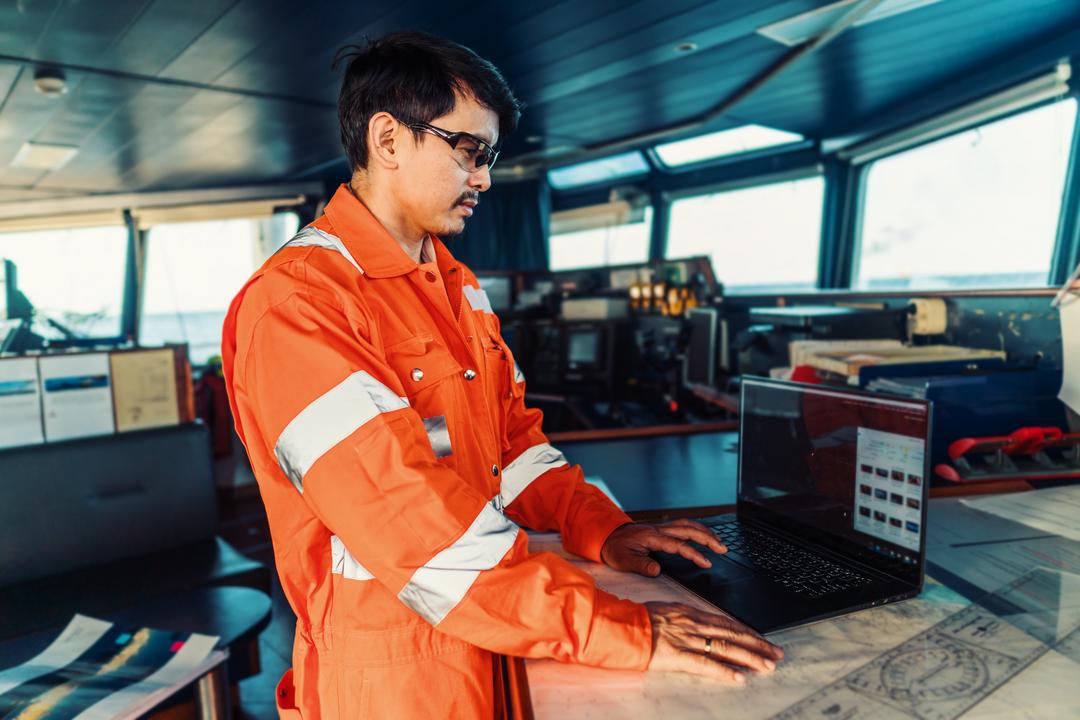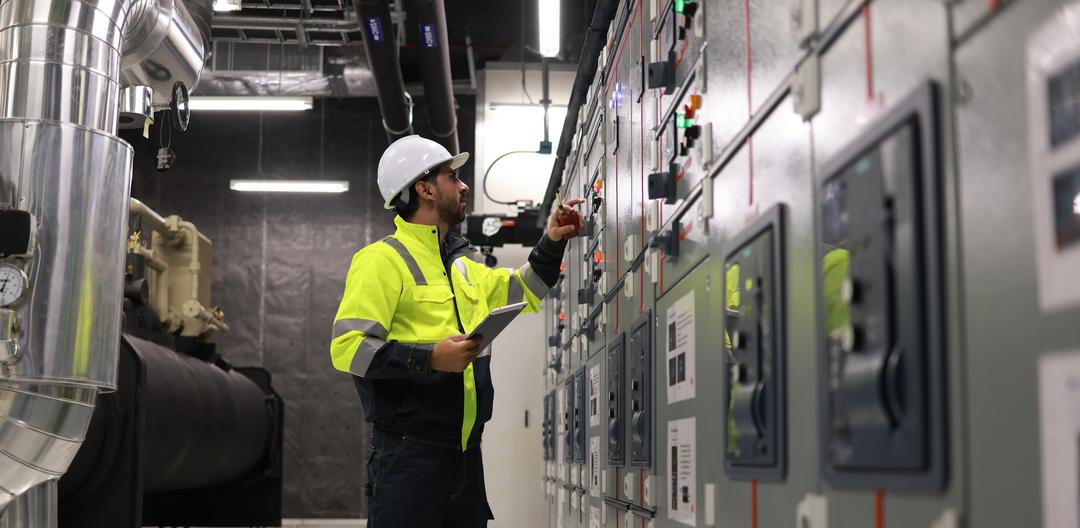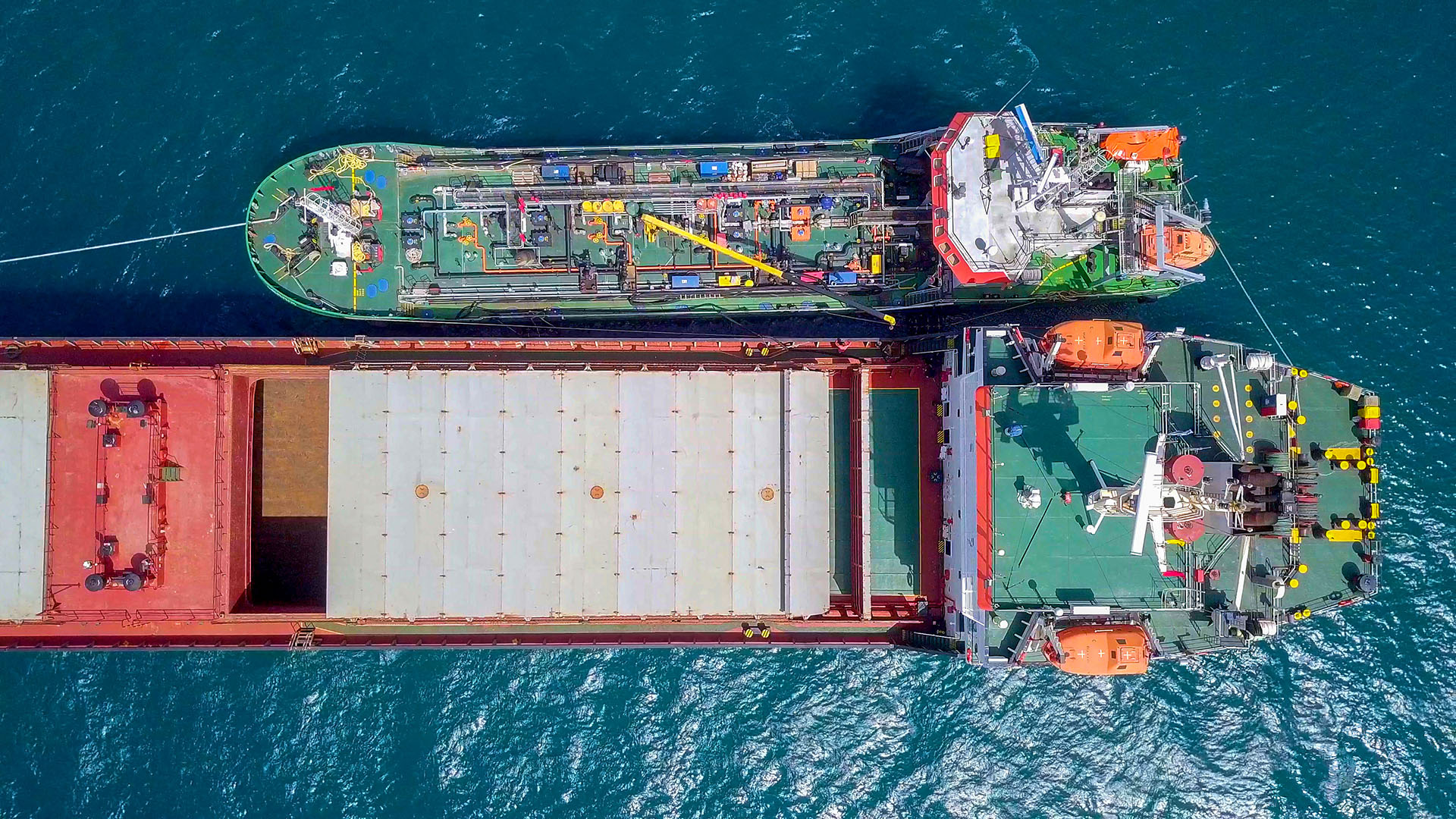Emissions regulations within the maritime sector are deeply intertwined with the efforts of the International Maritime Organization (IMO), which seeks to mitigate pollution and halt climate change.
Within this landscape, the Carbon Intensity Indicator (CII) and Energy Efficiency Existing Ship Index (EEXI) have emerged as keystones aiding industry players to reduce their emissions in line with the industry’s decarbonization targets. In a recent article, we went into detail on what CII is. This guide will further explain the intricacies of CII, how to calculate your CII score, and discuss solutions for reducing your carbon footprint.
What is carbon intensity and why is it significant?
CII is a measurement of a ship’s carbon emissions produced per unit of cargo over the nautical miles traveled. CII considers the entirety of a ship’s operations, accounting for annual fuel consumption, CO2 emission factors, distance sailed, and vessel design deadweight.
However, CII is more than a measurement. It is a lighthouse guiding the maritime industry towards carbon efficiency, and a catalyst for closer collaboration among key stakeholders: in an unprecedented move, BIMCO released a time charter party clause that includes charterers in the burden of CII responsibility. Historically, accountability for greenhouse gas (GHG) emissions had only ever been placed on the ship’s owner.
Each vessel is given a grade for the full year, from A to E, with thresholds from each grade depending on the Annual Efficiency Ratio (AER). If a ship’s attained CII score is a D rating for three consecutive years or an E rating in one year, a corrective action plan is required in the form of a Ship Energy Efficiency Management Plan (SEEMP). Part of the SEEMP is an implementation plan for how the required annual operational CII score of C or above will be achieved.
Beyond the SEEMP, a poor CII grade can result in penalties that resonate through both financial realms and Environmental, Social, and Governance (ESG) reputations. Maintaining good CII scores can confer a competitive edge in a field where sustainability is increasingly a deciding factor in business and financial decisions, such as with the Poseidon Principles.
What is the formula for calculating your CII score?
A vessel’s CII grade for the year is calculated based on reported IMO DCS (Data Collection System) data, which requires ships to provide detailed information on their fuel consumption and other relevant data. In its simplest form, CII is calculated by the amount of fuels consumed multiplied by the amount of CO2 emitted, divided by the distance the vessel has traveled multiplied by its tonnage (in other words, (Annual Fuel Consumption x CO2 Emission Factor) / (Annual Distance Sailed x Design Tonnage of the Vessel)).
To ensure a more accurate assessment of a ship’s CII, there are adjustments and exclusions in place. For instance, certain voyages, such as those with safety issues, may be excluded from the calculation. These are known as “correction factors” or “reduction factors,” which will allow the omission or adjustments of certain periods of sailing.
The CII score is determined using the AER, which takes into account various factors affecting a ship’s efficiency. The components of the AER formula include:
- Annual Fuel Consumption: This factor considers the total amount of fuel consumed by the ship over a year.
- CO2 Emission Factor: The CO2 emission factor, calculated based on the type of fuel used, relates to the amount of CO2 emitted per unit of fuel burned. Ships using cleaner fuels or employing more energy-efficient technologies will have lower CO2 emission factors and, therefore, a better CII rating.
- Annual Distance Sailed: The distance a ship travels over the course of a year is also factored into the CII calculation.
- Design Deadweight of the Vessel: The design deadweight reflects the maximum weight a ship can carry, including cargo, crew, fuel, and more. Ships with a higher deadweight capacity may achieve better CII scores if they carry a larger load efficiently.
AER = (Annual Fuel Consumption x CO2 Emission Factor) / (Annual Distance Sailed x (Design Deadweight of the Vessel or Gross Tonnage*))
* depending on the type of vessel
CII = AER (adjusted for correction factors)
Several tools and technologies are available to help shipowners and charterers measure and track their CII scores effectively. Implementing an advanced performance management platform, like Danelec Voyage Insights, can provide real-time insights into a ship’s efficiency and current CII score, identify areas for improvement, and ultimately lead to better CII ratings.
What can the shipping industry do to encourage a reduction in carbon emissions?
As we explored in a whitepaper co-written with BIMCO, to help reduce emissions, the shipping industry needs to improve certain ways of operating, starting with eliminating “hurry-up-to-wait” (or “sail fast, then wait”) behavior in favor of optimized port arrivals. The current modus operandi has resulted in unnecessary emissions, increased fuel expenditure, and reduced profits, to the detriment of both owners and charterers. In the whitepaper, we also discuss the possibility of new and improved voyage charter party terms to make Virtual Arrivals and Just-in-Time Arrivals a reality.
Legacy commercial structures impede collaboration between the two and create a lose-lose system centered around financial penalties and resulting unnecessary emissions.
We need to reorganize the ocean supply chain, and this begins with rethinking charter parties and realigning incentives between owners and charterers to remove the focus on claims, and instead encourage collaboration to improve vessel efficiency. To this end, Danelec has pioneered Green Charter, which uses machine learning-based data streams to implement new legal frameworks within charter party agreements to unlock win-win outcomes for both owners and charterers.
How can charter parties be made more collaborative?
With Green Charter, owners and charterers are empowered to leverage leading-edge machine learning and vessel sensor data to update traditional charter party agreements and remove the barriers to collaboration, helping reduce fuel consumption, cut emissions, and improve commercial outcomes.
Green Charter uses high-frequency data from the vessel and machine learning to create a Digital Twin simulation of that vessel. The real-time performance of the vessel can then be objectively monitored against this simulation. The data in the Digital Twin can be seen by both sides of the charter party and ensures improved collaboration and transparency. This Digital Twin forms the basis for a range of innovative dynamic clauses that can be built into a charter party to overcome the limitations of static charter party clauses. This means clauses can be added that eliminate speed restrictions, add dynamic performance baselines, or introduce collaborative management of CII scores.
Operational and technical optimization
With machine learning and Digital Twins, owners and charterers can also conduct data-driven fleet-wide performance monitoring, reporting, and alerting across all metrics including CII. This allows for the optimization of a ship’s operational and technical parameters – in a recent blog post and one-pager, we have detailed how these are critical factors in its carbon output.
With Danelec Voyage Insights owners and charterers can stay ahead of CII goals: Voyage Insights gives vessel owners and operators the ability to monitor the performance of their entire fleet and be alerted to performance issues before they become a problem, providing performance alerts, generator optimization alerts and reports, and performance analytics dashboards which show AER and CII trends over time, as well as a vessel’s forecasted CII grade.
Sailing towards bluer waters
CII regulations are part of a wider lattice of efforts to reduce shipping’s GHG emissions. While renewable energy and alternative fuels are important initiatives towards decarbonization, it is imperative that we take action with the tools available now to cut down our carbon footprint to reach the targets set in forums such as the MEPC 80.
If you would like to discuss measuring and improving your CII rating, reach out to us.




